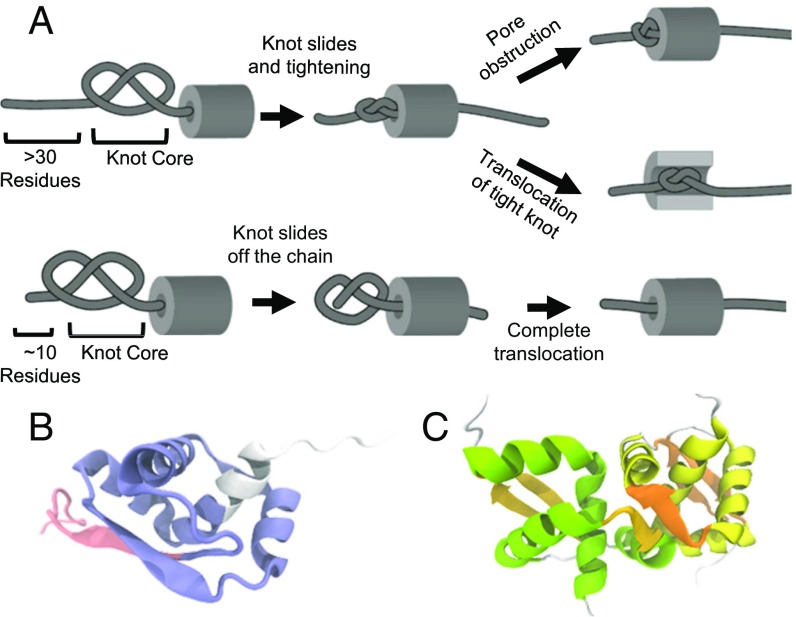Fig. 1.
Key events during the translocation of a knot through a pore determined by molecular dynamics. (A) The core of a knot is defined by the minimum residues that conform the knot in the structure of the protein. A deep (Top) or a shallow (Bottom) knot depends on the number of residues threading the knot core. During translocation of deep knots, a tight knot is formed more often than during the translocation of a shallow knot. A tight knot obstructs the translocation of the chain depending on the pore diameter and the knot size. Shallow knot tends to slide off the terminal, and the protein is translocated completely. (B) The backbone topology of MJ0366 creates a 31 or trefoil knot in its 3D structure (PDB ID code 2EFV). The core of the knot of MJ0366 (residues 17–78 in blue) is threaded by 14 residues at the N (red) and 12 residues at the C terminus (white). (C) Structure of the dimer of MJ0366. The dimeric interface is created by residues that conform the knot core of MJ0366. Each subunit is colored in yellow or green.

